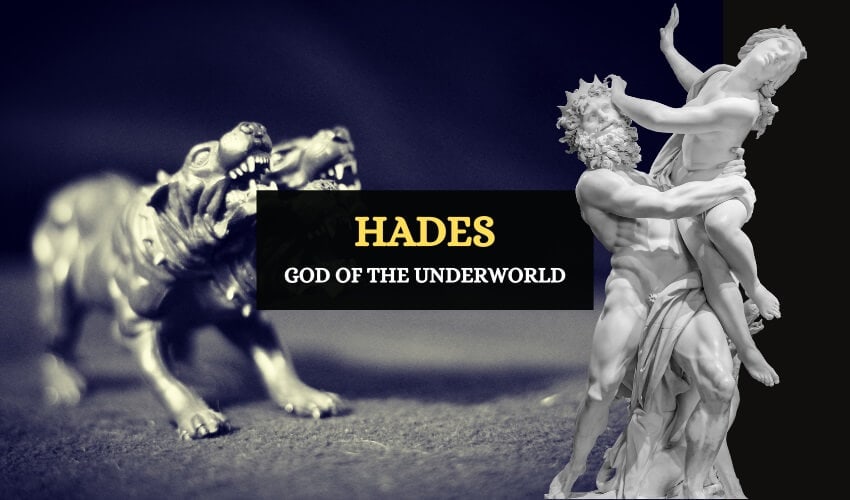
Table of Contents
Hades is theGreek Gods (Twelve Olympian) and Their Symbols Greek god of the dead as well as the king of the underworld. However, although he’s associated with death and darkness, Hades is a just and unbiased ruler. He carries out his tasks in the underworld without much disturbance, and is relatively less lustful and petty than most of the other Greek gods. Here’s a closer look at Hades, his origins, symbols, symbolism, and influence.
How Did Hades Become Ruler of the Underworld?
Hades is the oldest son of Cronus and Rhea. Cronus was the king of the Titans and wielded enormous power. But he feared a prophecy that stated that he would be overthrown by one of his children. To thwart this from happening, Cronus had the bright idea of swallowing all his children. This included Hades (the first-born), Hestia, Demeter, and Hera. However, Rhea hid the youngest, Zeus, and in his place, she swaddled a rock. She tricked Cronus into swallowing it instead, believing it to be his last child.
Once Zeus had grown, he confronted Cronus, forcing him to regurgitate his brothers and sisters. Afterwards, all the gods and their allies banded together to challenge the Titans. With their help, Zeus led a revolt against the Titans, resulting in the Titanomachy, a great war that ended with the victory of the Olympians and the downfall of Cronus and the Titans.
Zeus, Poseidon, and Hades then divided up the world into three realms over which they would rule. Zeus was given the sky, Poseidon the sea, and Hades the underworld.
Who is Hades?
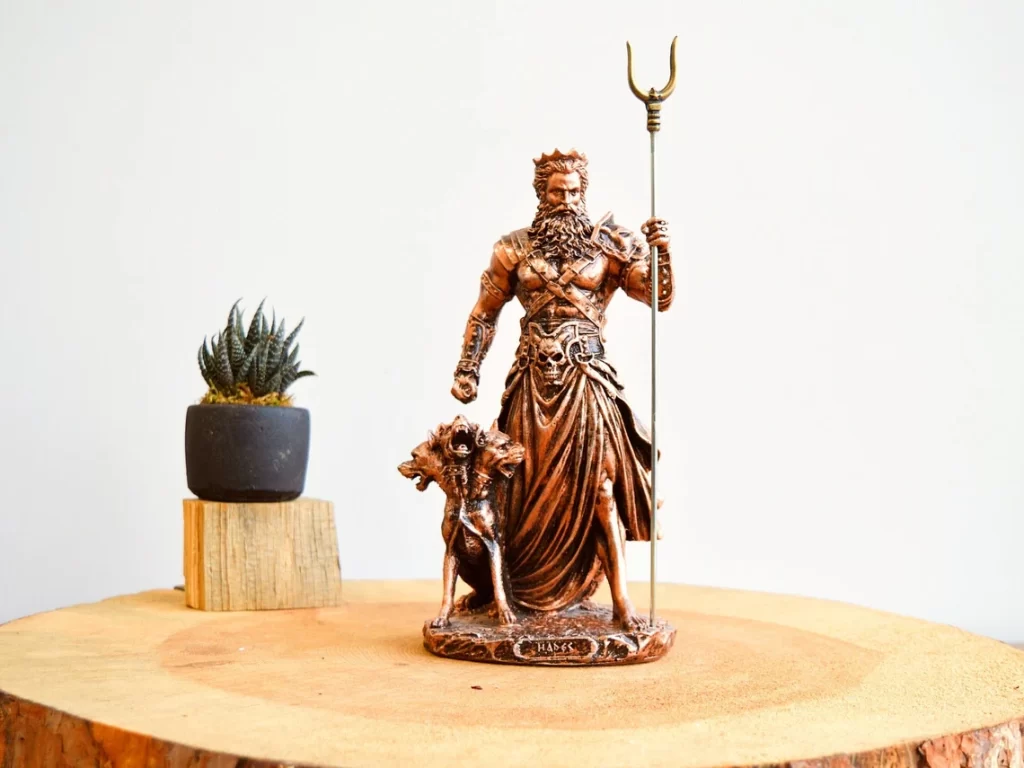
When we think of Hades, we tend to equate him with the devil and with evil. But in reality, Hades actually comes across as more altruistic than his brothers. He wasn’t easily impassioned or lustful, and is one of the few gods who remained relatively loyal to his wife.
Hades is often depicted as passive and somewhat cold and even stern. He held all of the subjects of his undead kingdom in equal standing and didn’t pick favorites. Hades’ strictest rule was that his subjects could not leave the underworld. If anyone tried to escape, they would be subject to his rage. Additionally, Hades was not fond of those who tried to cheat death or steal from him.
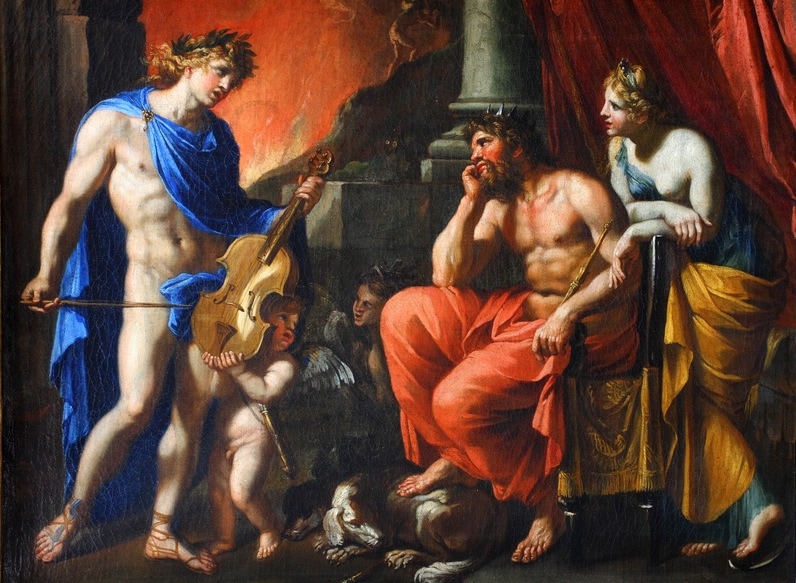
In the same way, he didn’t accept the living in Hades. Many Greek heroes end up venturing into the underworld, each for their own reasons. Because it was one of the most treacherous places a person could enter, those who entered did so at their own risk. Many never returned from it.
Those who worshipped Hades avoided swearing oaths upon his name or even saying his name at all. He controlled all the precious minerals, as they were found “under” the earth. These came from his domain. Black animals, mainly sheep, were sacrificed to him. When this was done, the blood dripped into a pit dug into the ground, while the worshippers averted their eyes and hid their face.
Hades, the place, is mentioned several times in the Christian New Testament. Later translations interprets this as simply Hell.
The Abduction of Persephone
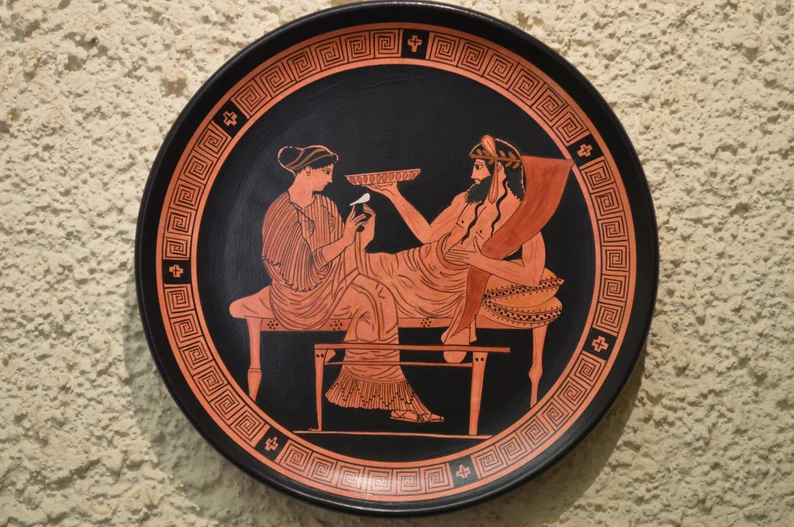
The most famous story involving Hades is the abduction of Persephone. The goddess Persephone was out in a field picking flowers, when the earth opened up and from the chasm, Hades emerged in his chariot pulled by fierce black horses. He grabbed Persephone and took her with him back to the underworld.
Persephone’s mother, Demeter, searched the entire earth for her daughter and when she couldn’t find her, she fell into a dark despair. As a result, there was a devastating famine as Demeter prevented crops from growing in the barren land.
Zeus eventually asked Hermes, the messenger of the gods, to go down to the underworld and convince Hades to return Persephone to her mother. Hades received Hermes and his message and relented. He prepared his chariot to return Persephone to earth.
Before they left, however, he gave Persephone a pomegranate seed to eat. In some versions, Persephone was given twelve pomegranate seeds, of which she ate six. The rule was that anyone who had tasted the food of the underworld would be forever bound to it. Because she had eaten the seeds, Persephone was required to return every year for six months. Demeter, upon seeing her daughter, released her hold on the earth’s crops and allowed them to flourish once again.
This story can be seen as an allegory for the seasons, as the land is verdant and abundant during the spring and summer when Persephone is with Demeter. But when Persephone is away in the underworld with Hades, the earth is cold and barren.
Symbols of Hades
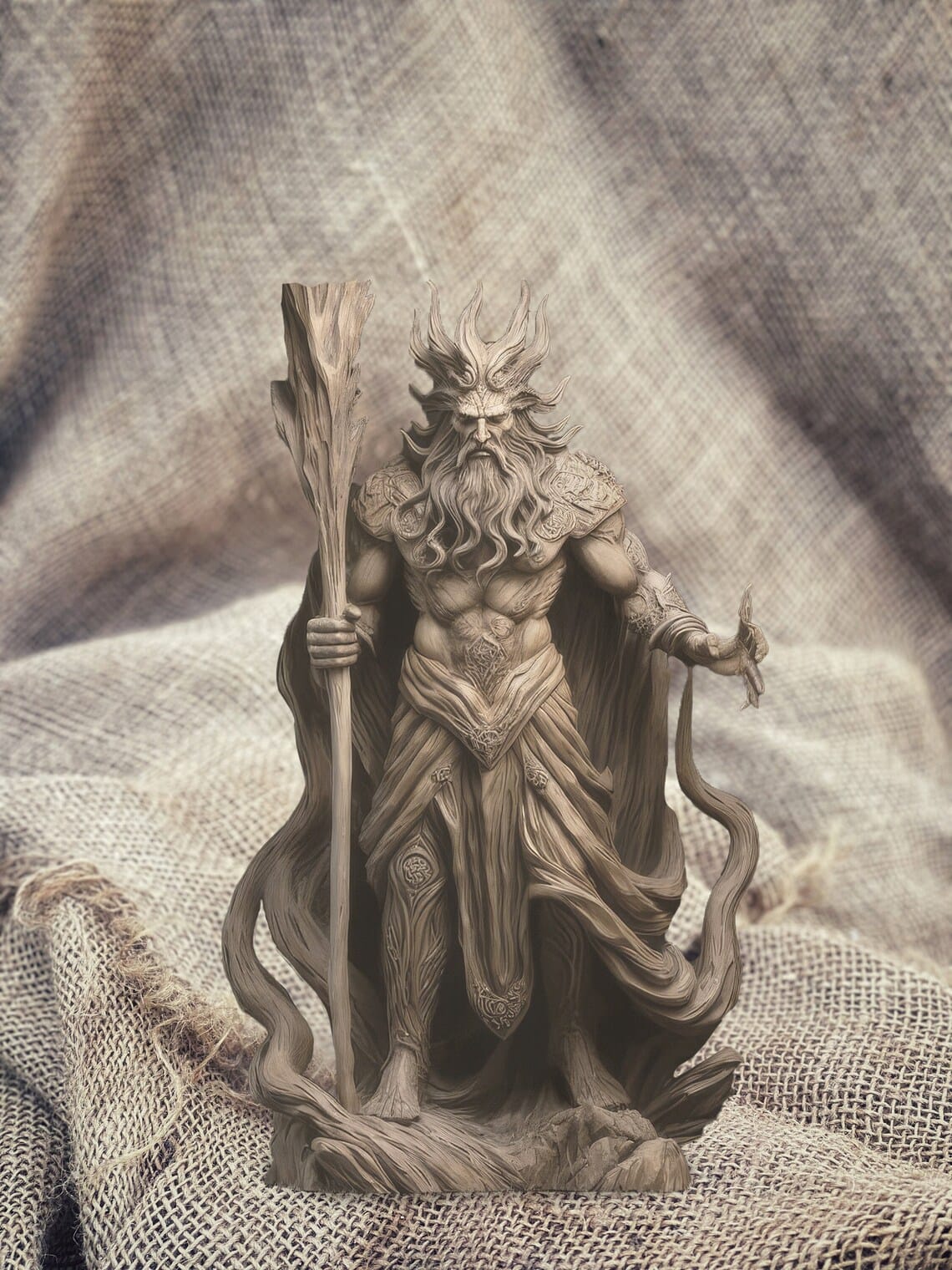
There are many symbols that represent Hades. Here are the most well-known.
- Cornucopia: Often referred to as the ‘horn of plenty’, the Cornucopia is a symbol of abundance and nourishment. In connection with Hades, this represents the fertile earth and the bounty of the harvest, directly linked to the myth of Persephone, who is the goddess of vegetation and harvest.
- Keys: Hades was often depicted holding keys, representing his control over the gates of the Underworld. He had the power to control who entered or exited the Underworld. He is the keeper of the keys, and this power symbolized his ultimate authority over the realm of the dead.
- Serpent: In many ancient cultures, serpents symbolize the cycle of life, death, and rebirth, because of their shedding skin. As king of the underworld, Hades is associated with all these concepts.
- White Poplar: Hades’ association with the white poplar comes from the myth of Leuce. She was a nymph he fell in love with. After she died, he turned her into a white poplar in the Elysian Fields.
- Screech Owl: When Persephone ate the 6 pomegranate seeds, it was Askalaphos who told on her. In anger, Demeter turned him into a screech owl. The screech owl’s ability to see in the dark parallels Hades’ command over the unseen realm of the dead. It’s also a herald of ill-omen.
- Black Horse: Hades is often depicted with a chariot drawn by four black horses, a common symbol of death and the Underworld in ancient Greece.
- Pomegranate: The pomegranate is directly connected to the myth of Persephone’s abduction. The fruit represents Persephone’s binding tie to the Underworld after she consumed its seeds, and it symbolizes fertility, life, death, and rebirth.
- Sheep and Cattle: These animals are often associated with sacrifice in ancient Greek culture. As sacrifices were made to please or appease the gods, sheep and cattle became symbols of this communication between mortals and the divine. As such, they symbolize Hades’ role in receiving the souls of the sacrificed.
- The Helm of Hades/Cap of Invisibility: This symbolizes Hades’ ability to travel unseen, reflecting the unseen realm he rules over. In myth, he lent this cap to Perseus, who used it to successfully behead Medusa.
- Cerberus: Hades’ three-headed dog guards the entrance to the Underworld, preventing the dead from leaving and the living from entering. Cerberus thus symbolizes Hades’ control over the realm of the dead and his responsibility to maintain the balance between life and death.
- The Scepter or Staff: Often depicted in art, Hades’ scepter represents his rule over the Underworld and the dead.
What Does Hades Symbolize?
As ruler of the underworld, Hades is associated with many important concepts. These include:
- Balance
- Justice
- Impartiality
- Judgement
- Scapegoating
- Transformation
- Death
- Riches
Hades is often seen as the impartial judge. Eventually, everybody ends up in the kingdom of Hades. Regardless of whether they were rich or poor, cruel or kind, all mortals are faced with a final judgement once they reach the underworld. In a kingdom where the bad are punished and the good are rewarded, Hades rules over them all. In this sense, he can be seen as symbolizing judgement, justice, and balance.
But he also represents the scapegoat. In many modern-day interpretations, Hades is scapegoated and turned into the villain, even though he appears just and typically stayed out of everybody’s business. In this way, it’s easy to see how people often make the assumption that someone is cruel or evil merely because of surface level associations with unhappy things (like death).
Since the Underworld was a place where souls went through a form of transformation after death, Hades can also symbolize change, metamorphosis, and rebirth.
Hades is also known as Plouton, which means “wealthy one”, which comes from his Roman equivalent. This is because he presided over all the precious metals, gems, and resources hidden under the Earth’s surface. In this way, he also symbolizes wealth and abundance.
Other Myths Involving Hades
For such a powerful god, Hades isn’t involved in too many myths. As the ruler of the underworld, he spent his time away from mortals and wasn’t involved in what was going on at Mt. Olympus. Hades was also feared by the Greeks, so much so that they didn’t refer to him by name. This may have resulted in fewer myths about him. Hades also didn’t have a cult following like the other gods. These reasons may have been why Hades isn’t prevalent in Greek Myths.
However, there are some important myths that occur in the underworld. In these myths, Hades often metes out punishment as he sees fit.
1. The Myth of Sisyphus
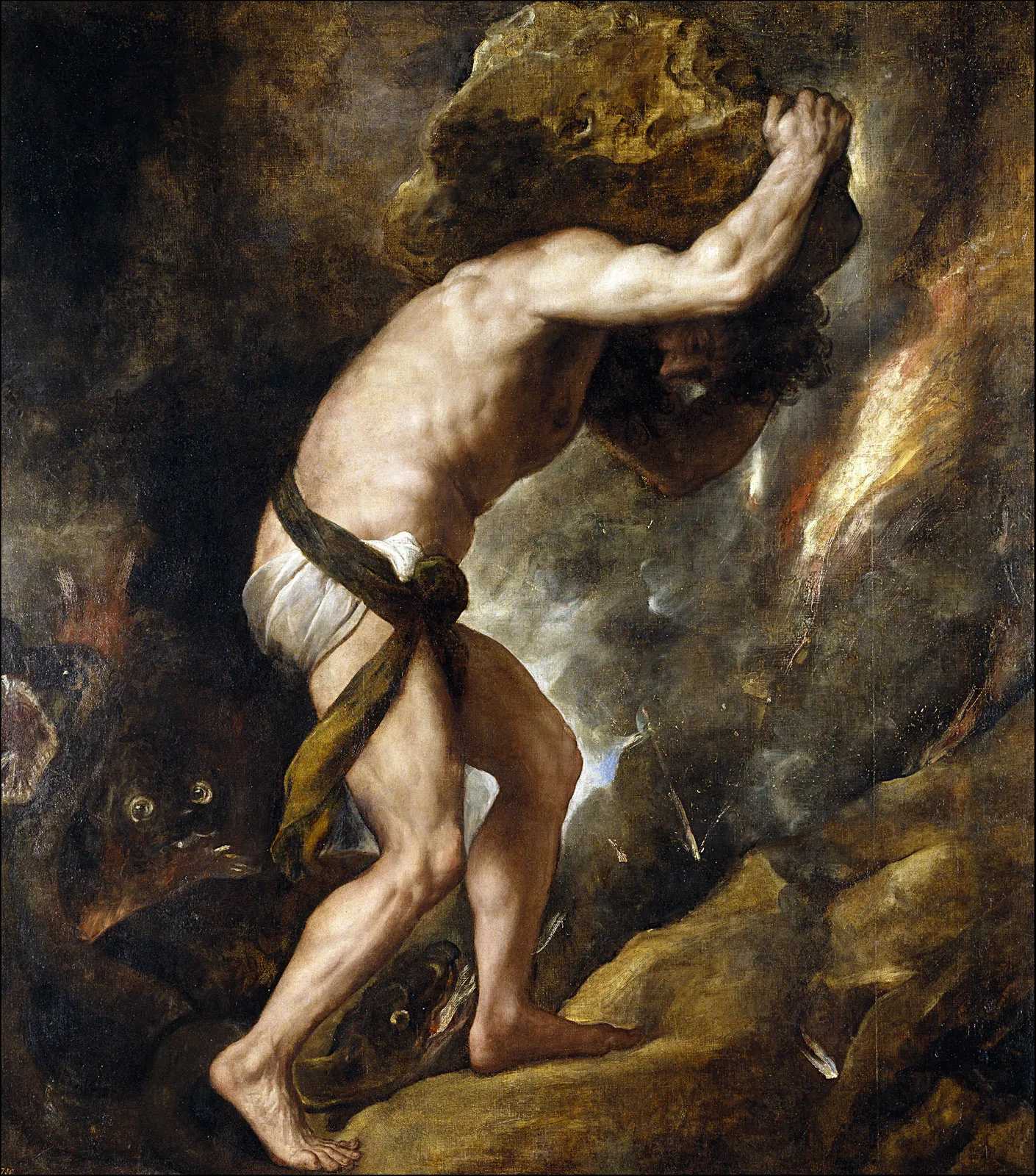
Sisyphus was the king of Corinth (at the time known as Ephyra) and was punished after death for his immoral and corrupt ways. He was known for using his intelligence for evil, plotting to kill his brother Salmoneus, and even cheating death by binding Thanatos, the god of death, with his own chains.
This incensed Hades as he believed Sisyphus was directly disrespecting him and his authority over the souls of the dead. The punishment for Sisyphus’ deceit was to forever be tasked with rolling a gigantic boulder up a hill in Hades, only to have it inevitably roll back down the hill before he reached the summit.
As a result of Thanatos’ confinement, nobody on earth could die, which angered Ares, the god of war, who believed that all of his battles were no longer entertaining as his opponents could not die. Ares eventually freed Thanatos and people once again were able to die.
2. Pirithous and Theseus
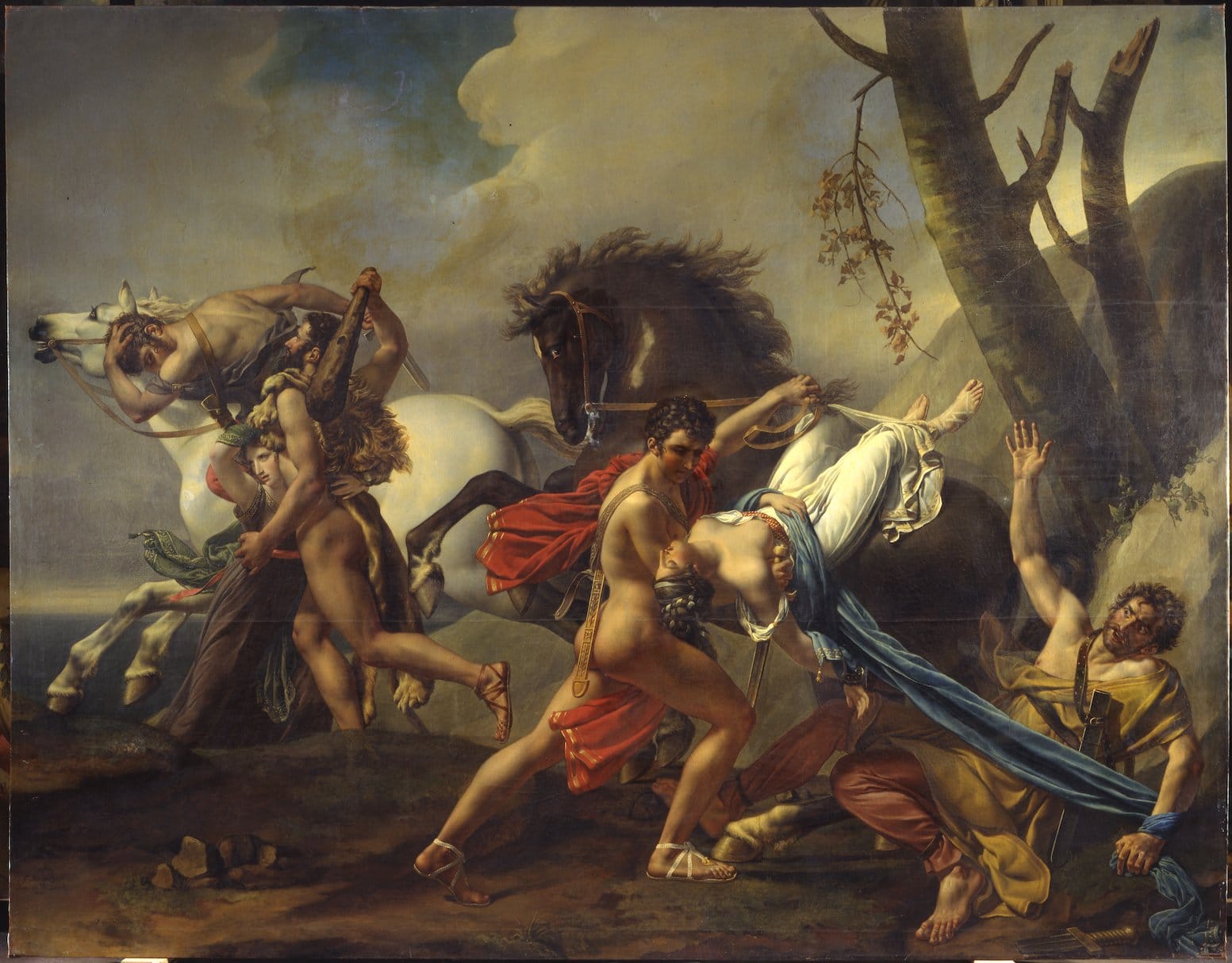
Pirithous and Theseus were best friends as well as children of gods and mortal women. They believed that the only women befitting of their divine heritage were daughters of Zeus. Theseus chose the young Helen of Troy (who would have been around seven or ten at the time) while Pirithous chose Persephone.
Hades learned of their plan to kidnap his wife, so he offered them hospitality with a feast. Pirithous and Theseus accepted, but when they sat down, snakes appeared and wrapped themselves around their feet—trapping them. Eventually, Theseus was rescued by the hero Heracles but Pirithous was forever trapped in the underworld as punishment.
2. Asclepius the God of Medicine
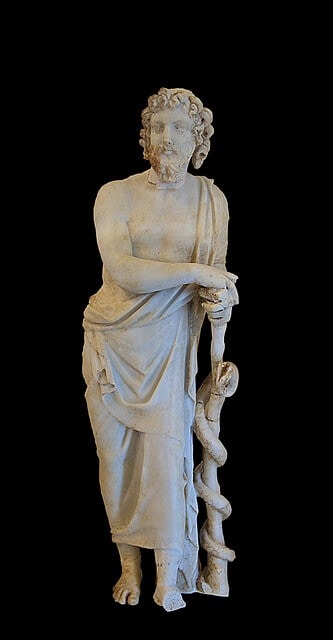
Asclepius was a mortal hero later transformed into the god of medicine. He is the son of Apollo and often represents the healing aspect of the medical sciences. While mortal, he gained the ability to bring back the dead from the underworld, which according to some myths, skills he himself used to keep himself alive.
Eventually, Hades discovered this and complained to Zeus that his rightful subjects were being stolen and that Asclepius must be stopped. Zeus agreed and killed Asclepius with his thunderbolts only to later resurrect him as the god of healing and give him a place on Mount Olympus.
4. Heracles, a.k.a. Hercules
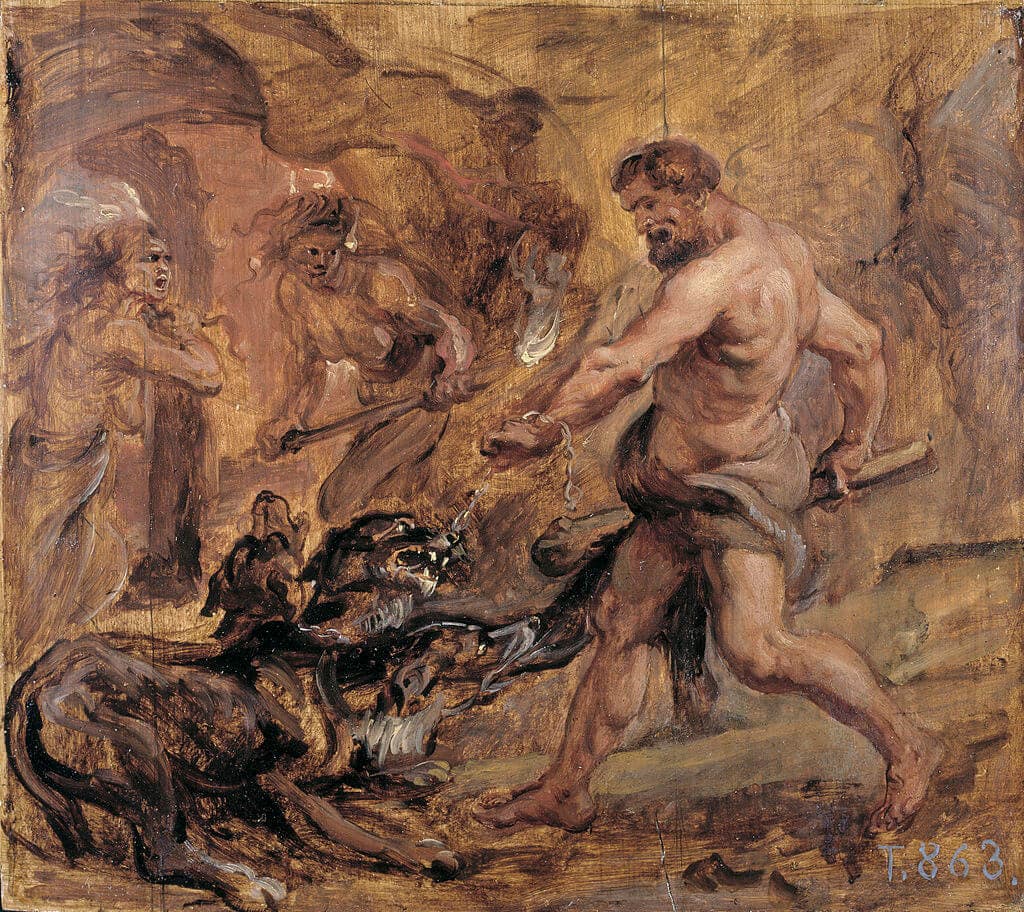
One of Heracles’ final labors was to capture Hades’ three-headed guard dog: Cerberus. Heracles learned how to enter and exit the underworld while remaining alive and then descended into its depths through an entrance at Taenarum.
The goddess Athena and the god Hermes both aided Heracles on his journey. In the end, Heracles simply asked Hades’ permission to take Cerberus and Hades gave it under the condition that Heracles didn’t hurt his loyal guard dog.
What’s the Difference Between Hades and Thanatos?
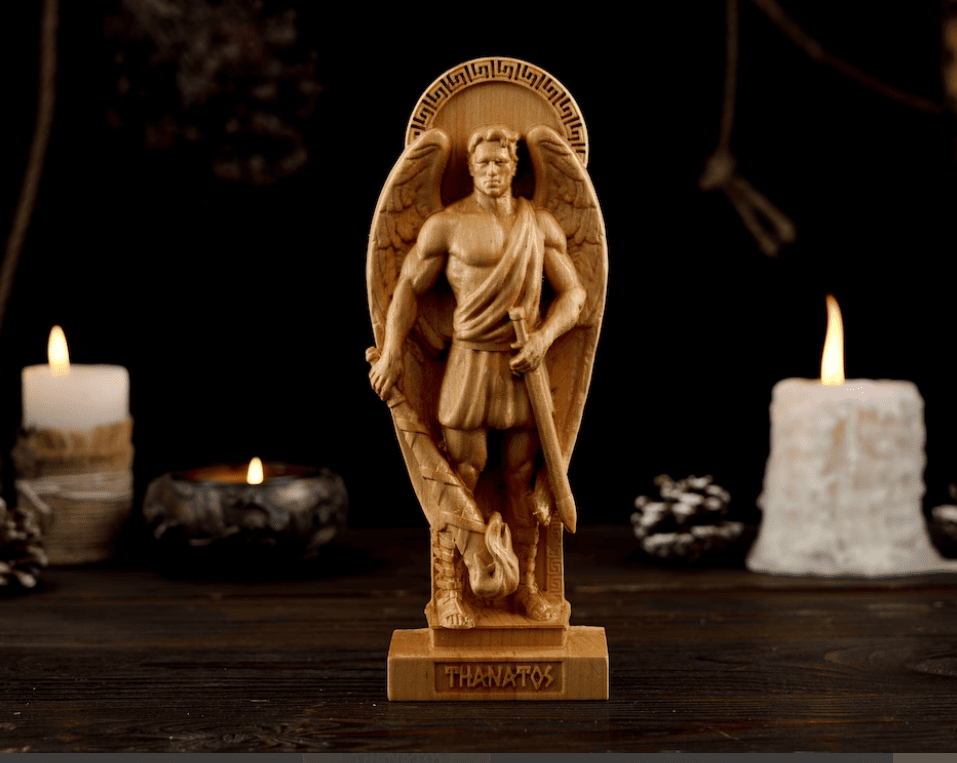
Hades wasn’t the god of death, but simply the god of the underworld and of the dead. The god of death was Thanatos, brother of Hypnos. Many get this confused, believing Hades to be the god of death. There are clear distinctions between these two.
Thanatos is the personification of death itself. He is not an Olympian god but is a minor figure in Greek mythology. Thanatos is often depicted as a winged spirit or a bearded man, and his touch was considered lethal. He represents peaceful death and is often shown to be more compassionate compared to the violent deaths caused by his blood sisters, the Keres, who personified violent death.
Hades in Roman Mythology
Hades’ counterpart in Roman mythology is a combination of the Roman gods Dis Pater and Orcus. They were merged into Pluto. To the Romans, the word “pluto” was also synonymous with the underworld just as “hades” was to the Greeks.
The root of the name Pluto means “wealthy”. More elaborate versions of the name also existed, which could be translated as “giver of wealth,”. All of this can be seen as a direct reference to both Hades and Pluto’s association with precious minerals and wealth.
Hades in Modern Times
Depictions of Hades can be found all over modern pop culture. He is often used as an antagonist because of his association with the dead and the underworld,. Funnily enough, in Greek mythology these associations do not make him evil.
Rick Riordan’s Percy Jackson, however, does subvert the idea that Hades is always evil. In the first book of the series, Hades is framed by a demigod as having stolen Zeus’ thunderbolts despite having nothing to do with it. Later, once the truth is discovered, he is given begrudging apologies by those who jumped to assume his guilt.
In the popular Disney animated film, Hercules, Hades is the main antagonist. He tries to overthrow Zeus and rule the world. Throughout the story he attempts to kill Hercules to maintain his own power.
Many video games take inspiration from the king of the underworld. He appears as a character in the God of War video game series, the Kingdom Hearts series, Age of Mythology, as well as many others. However, he is often portrayed as being evil.
A species of blind, burrowing snake, Gerrhopilus hades, is named after him. It is a thin, forest-dwelling creature that can be found in Papua New Guinea.
Hades Facts
Hades’ parents are Cronus and Rhea.
His siblings are the Olympian gods Demeter, Hestia, Hera, Chiron and Zeus.
Hades’ consort is Persephone, whom he abducted.
Hades had two children – Zagreus and Macaria. However, some myths state that Melinoe, Plutus, and the Erinyes are also his children.
Hades’ Roman equivalents are Dis Pater, Pluto and Orcus.
Hades was the ruler of the underworld, but he wasn’t necessarily evil. He’s portrayed as being just and meting out punishment as deserved. He could, however, be stern and merciless.
He lived in the underworld, often called Hades.
No, the god of death is Thanatos. Hades is the god of the underworld and of the dead (not of death).
Hades is the god of the underworld, of the death and of riches.
Summing Up
Although he is the god of the dead and the somewhat gloomy underworld, Hades is far from the evil and conniving figure that current day story tellers would have you believe. Instead, he was considered fair when judging the deeds of the dead and often much more evenly-keeled compared to his rowdy and vengeful brothers.
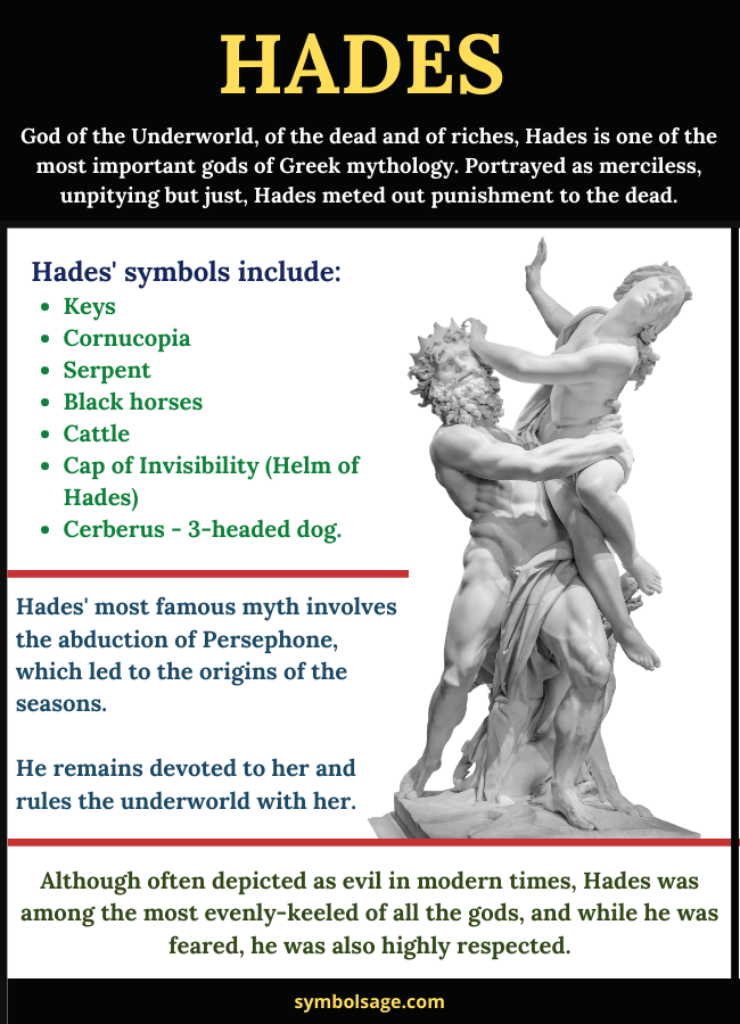
Related Articles:
Greek Gods (Twelve Olympian) and Their Symbols
Erebus – Greek God of Darkness
Thanatos – Personified Greek God of Death
Uranus – The Story of The Primordial Greek God of the Sky








